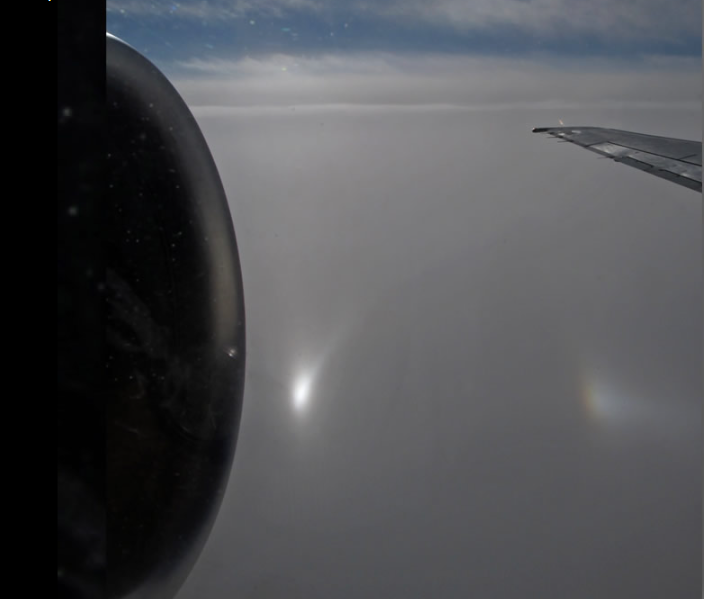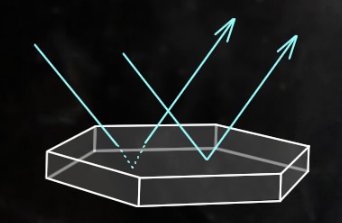OPOD - Subsun streaks?
OPOD - Subsun Streaks: A Fascinating Atmospheric Phenomenon
Have you ever witnessed a mesmerizing display of atmospheric optics while gazing at the sky? One such captivating phenomenon is the occurrence of subsun streaks. These peculiar streaks, often accompanied by above horizon and subhorizon halos, leave observers in awe. In this article, we delve into the intriguing world of subsun streaks and explore their mysterious nature.
At first glance, subsuns may appear as direct reflections of the sun. However, they are actually formed by millions of horizontal plate ice crystals that reflect sunlight towards the observer. When these crystals align almost perfectly horizontally, the subsun can bear a striking resemblance to the sun itself. Typically, though, the crystals wobble slightly, resulting in a vertically elongated image of the sun. In instances where the wobbles become more pronounced, the subsun transforms into a lower sun pillar.
While subsuns have been well-documented, curved streaks emanating from them continue to baffle scientists and enthusiasts alike. Although photographs capturing these curved streaks exist, their origin remains unexplained. One possible explanation is that the plate crystals responsible for subsuns become temporarily tilted due to disturbances in the airstream caused by passing aircraft. However, this theory encounters a challenge when considering certain images that allow for measurements of the distance between glinting crystals and the aircraft. Surprisingly, these distances range from 40 to 60 meters, exceeding the length of the aircraft's wing. Furthermore, in Robert Goren's photograph, which had an exposure time of 1/1250s, no streaks are visible. This absence of glints suggests that the ice crystals responsible for the streaks were located at a considerable distance.
It is worth noting that window scratches can produce a similar effect to subsun streaks. Therefore, when attempting to capture these atmospheric phenomena, it is essential to be cautious of any potential distortions caused by window imperfections. To mitigate this issue, it is advisable to take multiple images while deliberately moving the camera relative to the window between shots. This technique can help discern genuine subsun streaks from artifacts introduced by window scratches.
The photographs captured by Robert Goren, which are featured in this article, offer a glimpse into the elusive nature of subsun streaks. These images provide valuable insights into the intricacies of this atmospheric phenomenon. By studying and analyzing such photographs, researchers can gather crucial data to further our understanding of subsuns and their associated streaks.
In conclusion, subsun streaks continue to captivate observers with their enigmatic appearance. While we have made significant strides in unraveling the mysteries of atmospheric optics, these streaks remain a puzzle. The interplay between plate ice crystals, their orientation, and external factors such as aircraft disturbances adds to the complexity of this phenomenon. As scientists and enthusiasts continue to document and study subsun streaks, we can hope to shed more light on this fascinating atmospheric occurrence. So, keep your eyes to the sky and be prepared to witness the wonders that nature has in store for us!

Subsun Streaks?
Robert Goren was travelling from Florida to Atlanta when he saw a host of above horizon and subhorizon halos.
Here we have a subsun and to the right a subparhelion.
The puzzle is the arc curving upwards and rightwards from the subsun.
Subsuns are direct reflections of the sun by millions of horizontal plate ice crystals. When almost perfectly horizontal the subsun can resemble the sun itself. More usually, the crystals wobble slightly and the sun image is vertically elongated. When the wobbles are large the subsun transforms into a lower sun pillar.
Curved streaks from subsuns have been seen and photographed previously but they remain unexplained.
A possibility is plate crystals become temporarily tilted in the airstream perturbed by the aircraft. The difficulty with that explanation is that in some images the distance of the glinting crystals can be measured from the length of their streak, the camera shutter speed and the aircraft's speed. The distances are 40-60m, farther than the wing length of the airplane. Robert Goren's arc shows no streaks during the 1/1250s exposure but the absence of any glints suggests that the ice crystals responsible were at some distance.
Beware of window scratches! They produce a similar effect. Try to take many images, moving the camera relative to the window between them.
Image ©Robert Goren, shown with permission.

Subsun rays. Reflections from the upper and lower hexagonal faces of horizontal plate crystals.
Note: this article has been automatically converted from the old site and may not appear as intended. You can find the original article here.
Reference Atmospheric Optics
If you use any of the definitions, information, or data presented on Atmospheric Optics, please copy the link or reference below to properly credit us as the reference source. Thank you!
-
<a href="https://atoptics.co.uk/blog/opod-subsun-streaks/">OPOD - Subsun streaks?</a>
-
"OPOD - Subsun streaks?". Atmospheric Optics. Accessed on November 21, 2024. https://atoptics.co.uk/blog/opod-subsun-streaks/.
-
"OPOD - Subsun streaks?". Atmospheric Optics, https://atoptics.co.uk/blog/opod-subsun-streaks/. Accessed 21 November, 2024
-
OPOD - Subsun streaks?. Atmospheric Optics. Retrieved from https://atoptics.co.uk/blog/opod-subsun-streaks/.